As modern workspaces evolve, so does the understanding of what makes a truly productive and healthy environment.
Among ergonomic chairs and efficient lighting, indoor plants—especially air-purifying ones—are rising in popularity.
Cacti, long known for their low-maintenance beauty, are now gaining attention for another reason: their ability to improve air quality while seamlessly fitting into any office setting.
In this guide, you’ll discover why cactus plants make a perfect green companion for workspaces, which species to choose, how to care for them, and the powerful benefits they bring to both air and atmosphere.
The Growing Trend of Office Plants
The shift to more biophilic office design has made indoor plants an essential element in many modern workplaces. Beyond aesthetics, they serve a greater purpose:
Cleaner air, reduced stress, and improved concentration.
More employees and employers alike are realizing that workspace wellness directly impacts productivity.
Plants—especially those that require minimal maintenance—are among the easiest, most affordable ways to boost indoor well-being.
Do Cacti Really Purify the Air?
You might wonder: aren’t leafy plants like spider plants or peace lilies better at air purification? While they are popular, cacti also contribute meaningfully to air quality—though in a different way.
Here’s how cacti help:
- Carbon dioxide absorption: Cacti perform photosynthesis at night through a unique method called CAM (Crassulacean Acid Metabolism), which allows them to absorb CO₂ even while lights are off—a major benefit in 24/7 office setups.
- Oxygen production: Because they do much of their gas exchange at night, they contribute to a more balanced oxygen level, especially helpful in air-conditioned buildings.
- Reduction of VOCs: Some studies suggest that cactus species can help reduce volatile organic compounds, common in office furnishings, carpets, and electronics.
While they may not be as fast-acting as large-leafed plants, cacti still serve a steady and subtle role in indoor air purification, especially when combined with proper ventilation.
Benefits of Cactus in Office Environments
Why choose cactus over other plants for your workspace? Here are some compelling reasons:
Low Maintenance
Cacti are some of the easiest plants to care for, making them ideal for busy professionals or office settings without designated plant caretakers.
They require:
- Minimal watering (once every 2–3 weeks)
- Little pruning
- No misting or frequent fertilizing
Space-Saving Design
Thanks to their compact structure and vertical growth, cacti easily fit on desks, windowsills, or shared tables without interfering with work materials.
Visual & Mental Health Boost
Numerous studies have linked indoor plants to:
- Reduced stress levels
- Improved mood
- Enhanced concentration
Cacti, with their sculptural and often symmetrical form, provide visual interest and subtle calm, helping workers feel more at ease.
Humidity Regulation
Even though cacti don’t release large amounts of moisture, their presence helps balance humidity by acting as natural regulators—useful in overly dry office environments caused by constant AC use.
Top Air-Purifying Cactus Varieties for Offices
Not all cacti are created equal—some are better suited to office environments based on size, appearance, and ease of care. Here’s a breakdown of the best types:
1. Christmas Cactus (Schlumbergera)
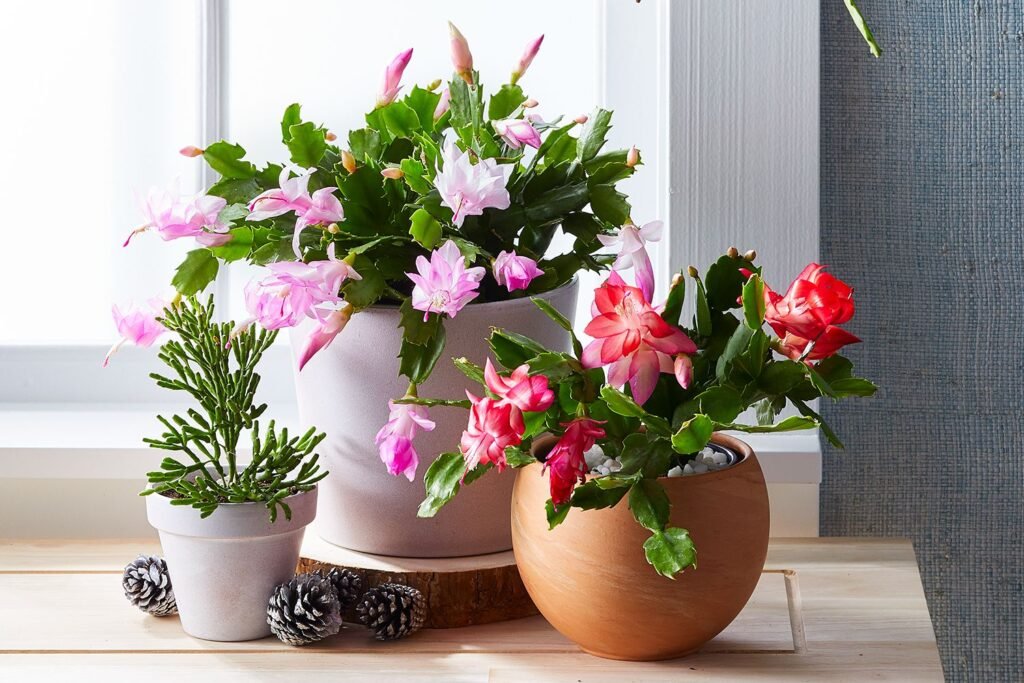
Despite being called a cactus, this variety has leafy stems and vibrant flowers, making it ideal for adding color.
It’s also one of the few cacti that releases oxygen at night and does well in indirect light.
- Air Benefit: Gentle purifier
- Best For: Office desks, shared meeting tables
- Care Tip: Likes slightly moist soil—water when top inch is dry
2. Snake Cactus (Aporocactus)
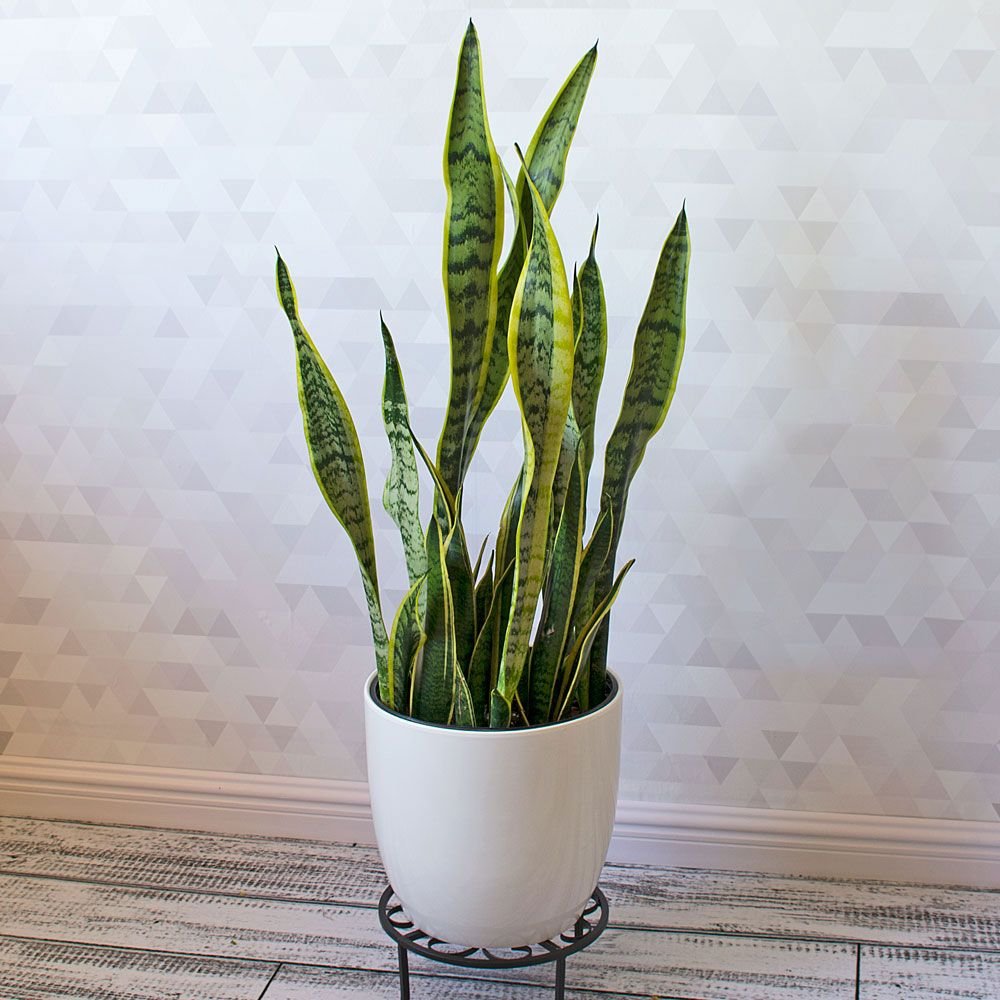
Also known as “Rat Tail Cactus,” this one is known for its trailing stems and suitability for hanging pots or elevated shelves.
- Air Benefit: Can trap and reduce airborne toxins
- Best For: Open-plan offices or creative spaces
- Care Tip: Bright, indirect light preferred; water every few weeks
3. Barrel Cactus
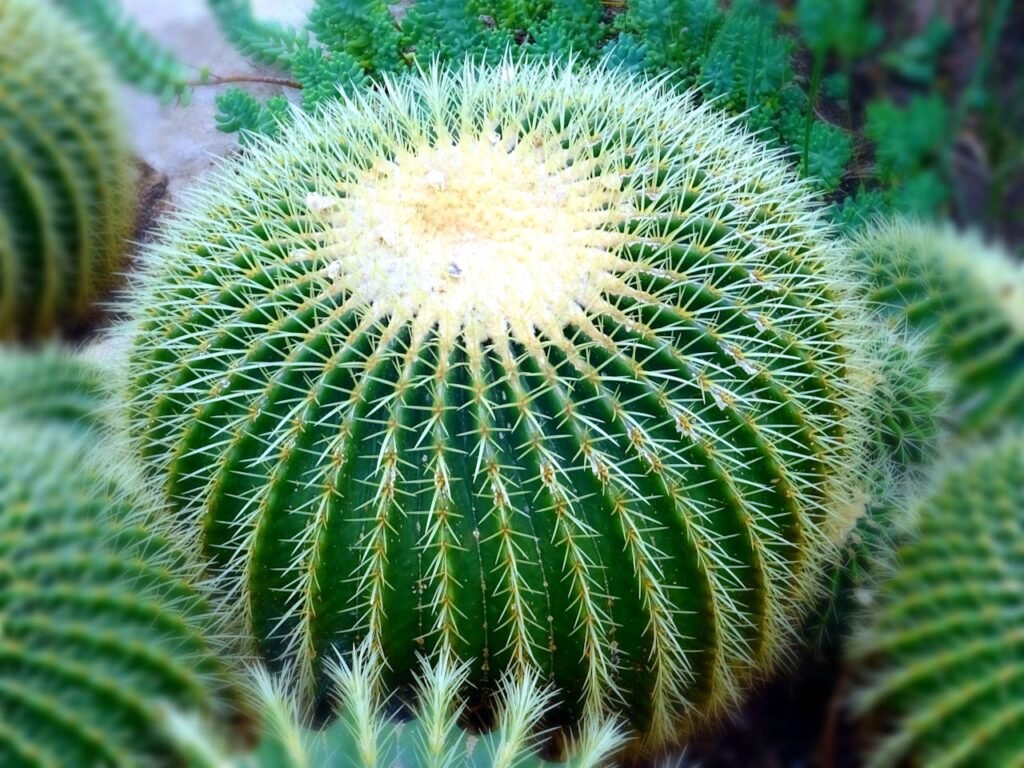
These round and often ribbed cacti are classic and highly decorative, making them perfect focal points for minimalist desks.
- Air Benefit: Promotes balanced CO₂ levels
- Best For: Window sills, reception areas
- Care Tip: Needs direct sun and minimal water
4. Prickly Pear (Opuntia)

Recognizable by its “paddle-shaped” pads, this cactus is not only ornamental but also efficient at storing and cycling air.
- Air Benefit: Potential VOC reduction
- Best For: Large open spaces or solo work offices
- Care Tip: Needs a deep container and plenty of light
5. Ladyfinger Cactus (Mammillaria elongata)

This slender and clustered variety fits perfectly into small containers and adapts well to indoor lighting conditions.
- Air Benefit: Subtle filtration of particles
- Best For: Small workstations, corner shelves
- Care Tip: Water lightly, allow soil to dry completely
6. Saguaro Cactus (Carnegiea gigantea)
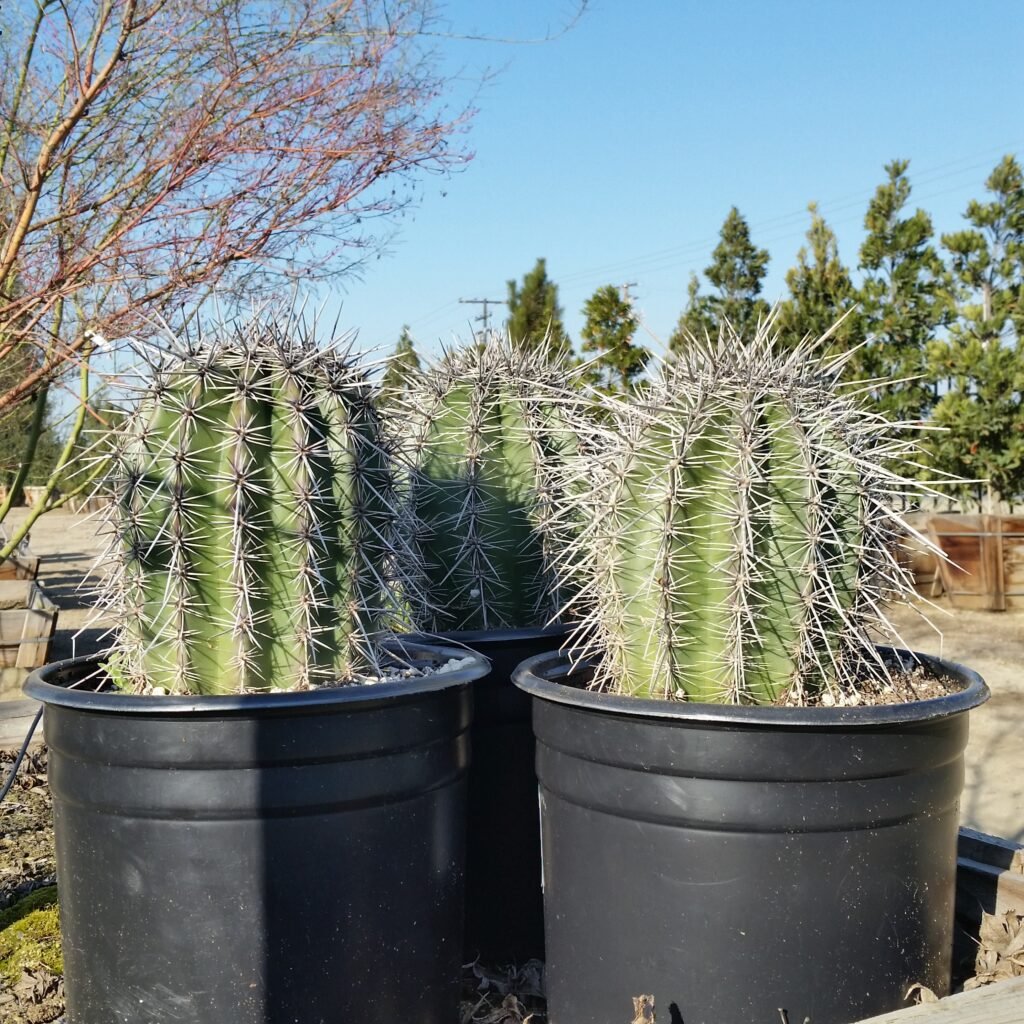
Though more symbolic, a small juvenile saguaro can be a powerful statement piece in an office lounge or window.
- Air Benefit: Adds oxygen during dormant office hours
- Best For: Large spaces or plant corners
- Care Tip: Full sun and very sparse watering
Choosing the Right Cactus for Your Workspace
Not sure where to start? Consider these factors before picking your cactus:
Lighting Conditions
Cacti prefer light, but each species varies.
- For low-light offices: Christmas Cactus or Ladyfinger
- For bright spots: Barrel or Saguaro
Space Availability
If your desk is small, avoid large cacti with sprawling arms. Choose vertical growers or compact clusters.
Time Commitment
If you’re new to plant care or don’t want the hassle, opt for extremely low-maintenance types like the Snake Cactus or Barrel Cactus.
Safety Concerns
Some office environments require non-prickly plants due to shared spaces or proximity to walkways. Look for softer varieties or place prickly ones where contact is minimal.
Styling and Placement Ideas for Office Cactus
A cactus isn’t just a plant—it’s a decor element that adds personality to a workspace. Thoughtful placement and pairing can elevate the vibe of even the plainest cubicle or desk.
Desk Corners and Minimalist Layouts
For a clean, minimal aesthetic, place a single Barrel Cactus in a neutral-toned ceramic pot at the far corner of your desk.
It adds structure and greenery without overwhelming your workspace.
Hanging Planters
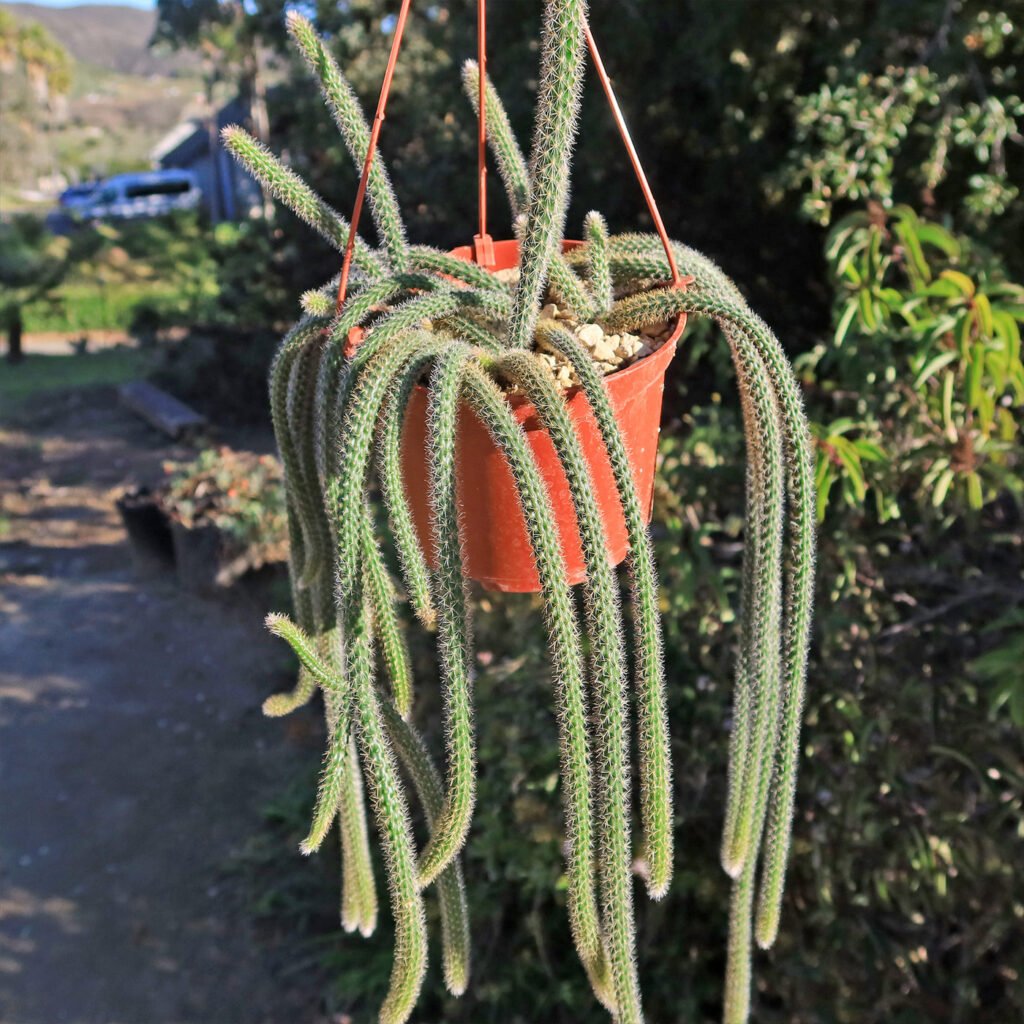
Trailing cacti like the Rat Tail Cactus look elegant in hanging baskets. Install small ceiling hooks or wall-mounted holders near bright windows to create a mini vertical garden.
Grouped Succulent Displays
Combine different species—like a Prickly Pear, Ladyfinger, and a mini Saguaro—in a single wide container. Grouping cacti of different heights and shapes creates visual balance and encourages microclimate humidity sharing between plants.
Reception and Waiting Areas
Opt for larger varieties in decorative pots, placed on stands or tables in open areas. This makes the space feel warmer and more inviting, especially when paired with natural light and neutral decor.
Shared Office Tables
Use smaller, low-prickle cacti such as Christmas Cactus in low-profile pots across shared desks or conference tables. They enhance collaboration zones without becoming a distraction.
Cactus Maintenance in the Office: Care Made Easy
Caring for a cactus in an office setting is simple when you understand the basics. A well-maintained cactus can thrive for years with little intervention.
Watering
- Water every 2–3 weeks, depending on humidity and lighting.
- Always allow the soil to dry out completely before watering again.
- Use containers with drainage holes to prevent root rot.
Lighting
- Most cacti love bright, indirect sunlight.
- South or east-facing windows work best.
- If your office lacks windows, consider a grow light for a few hours a day.
Soil
Use a well-draining cactus mix, usually composed of sand, perlite, and a small amount of organic matter. Avoid using regular potting soil—it retains too much moisture.
Fertilizing
Feed your cactus with a diluted cactus fertilizer every 2–3 months during the growing season (spring and summer). No need to fertilize during winter dormancy.
Psychological & Productivity Benefits of Office Cacti
You’ve likely heard plants reduce stress—but what about cacti specifically? Turns out, even these prickly companions bring a range of mental and emotional benefits.
Improved Focus
A study from the University of Exeter found that offices enriched with plants saw a 15% boost in productivity.
Cacti, due to their unique forms, add subtle visual stimulation that can help maintain concentration.
Reduced Mental Fatigue
Looking at plants—even briefly—has been shown to refresh attention and reduce the mental fatigue associated with screen-heavy work.
Stress Reduction
Natural elements like cactus have a grounding effect. Their presence in a workspace helps lower cortisol levels, leading to better mood regulation and more peaceful workdays.
Eco-Friendly Benefits: Sustainability in the Workspace
Cacti don’t just clean the air—they’re environmentally responsible plants. Adding them to an office is a small but effective step toward a greener workplace.
Low Water Consumption
Cacti are incredibly water-efficient, making them ideal for offices aiming to reduce water waste.
One cactus consumes up to 80% less water than a typical leafy houseplant.
Longevity & Minimal Waste
Cacti can live for years—sometimes decades—without needing to be replaced frequently. This reduces waste and the need to constantly buy new decor.
Reusable Planters
Opt for clay, terracotta, or biodegradable pots to enhance your cactus display in a sustainable way.
FAQs: Everything You Need to Know About Cacti in the Office
Can I keep a cactus on my desk if there’s no sunlight?
Yes, but you’ll need a grow light. Many cacti need bright light to thrive, so if your office lacks windows, artificial lighting is a good alternative.
Are cacti safe for shared office spaces?
Yes, but choose non-prickly varieties or place pricklier ones out of reach to avoid accidental pokes.
How often should I water my office cactus?
Typically every 2–3 weeks. But always check if the soil is completely dry before watering.
Do cacti really purify the air?
Yes, though not as aggressively as some leafy plants. Cacti still absorb CO₂, release oxygen at night, and reduce VOCs in enclosed spaces.
Which cactus is best for a beginner?
The Barrel Cactus and Christmas Cactus are among the easiest to care for, making them great starting options.
